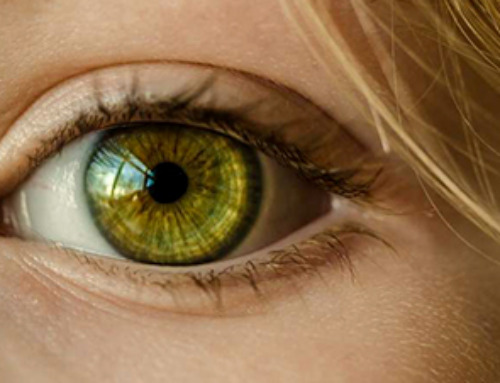Smoking and vaping impair vascular function, even without nicotine, with the most significant effects seen in nicotine-containing e-cigarettes. Researchers recommend avoiding both for better health.
Researchers have discovered immediate impacts of cigarette and e-cigarette smoking on vascular function, even in the absence of nicotine. Findings from the ongoing study were recently presented at the annual meeting of the Radiological Society of North America (RSNA).
E-cigarettes, also known as vapes, are battery-operated devices that heat a liquid to produce an aerosol, which is then inhaled into the lungs. Vapes contain significantly fewer chemicals and toxins than are found in tobacco smoke. As a result, e-cigarettes are believed by many to be less harmful than cigarette smoking. Vapes also come in various flavors, making them popular among young people.
Investigating the Immediate Impact of Smoking and Vaping
"E-cigarettes have long been marketed as a safer alternative to regular tobacco smoking," said study lead author Marianne Nabbout, M.D., a radiology resident at the University of Arkansas for Medical Sciences in Little Rock. "Some believe that e-cigarettes don't contain any of the harmful products, such as free radicals, found in regular tobacco cigarettes, because no combustion is involved."
While vaping exposes users to fewer toxic chemicals than cigarettes, it can still be detrimental to vascular function and overall health.
In the study conducted at the University of Pennsylvania, Dr. Nabbout and colleagues sought to identify the acute effects on vascular function of cigarette smoking and the immediate effects of e-cigarette vaping, with and without nicotine.

A total of 31 healthy smokers and vapers ranging in age from 21 to 49 years have been included to date. In three separate sessions, study participants underwent two MRI exams, one before and one after each of the following smoking/vaping episodes: tobacco cigarette, e-cigarette aerosol with nicotine and e-cigarette aerosol without nicotine.
A cuff was placed on the upper thigh to restrict blood flow. Once deflated, femoral artery flow velocity (a measure of the speed of blood flow in the femoral artery) and venous oxygen saturation (a measure of the amount of oxygen in the blood that returns to the heart after supplying oxygen to the body's tissues) were evaluated.
Cerebrovascular (blood flow in the brain) reactivity was measured with a special type of MRI called phase-contrast MRI.
Significant Decreases in Vascular Function
The data of the smokers and vapers was then compared to the baseline scans of 10 non-smokers and non-vapers ranging from 21 to 33 years old.
Following inhalation of each type of vaping or smoking, there was a significant decrease in the resting blood flow velocity in the superficial femoral artery. This artery runs along the thigh and supplies oxygenated blood to the entire lower body.
The decrease in vascular function was most pronounced after inhalation of e-cigarettes containing nicotine, followed by e-cigarettes without nicotine.
Decreased venous oxygen saturation was also present in vapers, whether or not the e-cigarettes contained nicotine. This suggests an immediate decrease in the uptake of oxygen by the lungs after vaping.
"This study serves to highlight the acute effects smoking and vaping can have on a multitude of vascular beds in the human body," Dr. Nabbout said. "If the acute consumption of an e-cigarette can have an effect that is immediately manifested at the level of the vessels, it is conceivable that the chronic use can cause vascular disease."
According to Dr. Nabbout, the take-home message for the public is that vaping may not be free of harm. "Ultimately, we are relying on science to help guide the regulation of such products in favor of public health," she said. "Refraining from smoking and vaping is always recommended."
Meeting: 110th Scientific Assembly and Annual Meeting of the Radiological Society of North America
This research project is supported by the National Institutes of Health.
Co-authors are Michael C. Langham, Ph.D., Alessandra Caporale, Ph.D., Shampa Chatterjee, Ph.D., Frank T. Leone, M.D., M.S., Andrew Strasser, Ph.D., Christiana Cottrell
News
Multifunctional Nanogels: A Breakthrough in Antibacterial Strategies
Antibiotic resistance is a growing concern - from human health to crop survival. A new study successfully uses nanogels to target and almost entirely inhibit the bacteria P. Aeruginosa. Recently published in Angewandte Chemie, the study [...]
Nanoflowers rejuvenate old and damaged human cells by replacing their mitochondria
Biomedical researchers at Texas A&M University may have discovered a way to stop or even reverse the decline of cellular energy production—a finding that could have revolutionary effects across medicine. Dr. Akhilesh K. Gaharwar [...]
The Stunning New Push to Protect the Invisible 99% of Life
Scientists worldwide have joined forces to build the first-ever roadmap for conserving Earth’s vast invisible majority—microbes. Their new IUCN Specialist Group reframes conservation by elevating microbial life to the same urgency as plants and [...]
Scientists Find a Way to Help the Brain Clear Alzheimer’s Plaques Naturally
Scientists have discovered that the brain may have a built-in way to fight Alzheimer’s. By activating a protein called Sox9, researchers were able to switch on star-shaped brain cells known as astrocytes and turn them into [...]
Vision can be rebooted in adults with amblyopia, study suggests
Temporarily anesthetizing the retina briefly reverts the activity of the visual system to that observed in early development and enables growth of responses to the amblyopic eye, new research shows. In the common vision [...]
Ultrasound-activated Nanoparticles Kill Liver Cancer and Activate Immune System
A new ultrasound-guided nanotherapy wipes out liver tumors while training the immune system to keep them from coming back. The study, published in Nano Today, introduces a biodegradable nanoparticle system that combines sonodynamic therapy and cell [...]
Magnetic nanoparticles that successfully navigate complex blood vessels may be ready for clinical trials
Every year, 12 million people worldwide suffer a stroke; many die or are permanently impaired. Currently, drugs are administered to dissolve the thrombus that blocks the blood vessel. These drugs spread throughout the entire [...]
Reviving Exhausted T Cells Sparks Powerful Cancer Tumor Elimination
Scientists have discovered how tumors secretly drain the energy from T cells—the immune system’s main cancer fighters—and how blocking that process can bring them back to life. The team found that cancer cells use [...]
Very low LDL-cholesterol correlates to fewer heart problems after stroke
Brigham and Women's Hospital's TIMI Study Group reports that in patients with prior ischemic stroke, very low achieved LDL-cholesterol correlated with fewer major adverse cardiovascular events and fewer recurrent strokes, without an apparent increase [...]
“Great Unified Microscope” Reveals Hidden Micro and Nano Worlds Inside Living Cells
University of Tokyo researchers have created a powerful new microscope that captures both forward- and back-scattered light at once, letting scientists see everything from large cell structures to tiny nanoscale particles in a single shot. Researchers [...]
Breakthrough Alzheimer’s Drug Has a Hidden Problem
Researchers in Japan found that although the Alzheimer’s drug lecanemab successfully removes amyloid plaques from the brain, it does not restore the brain’s waste-clearing system within the first few months of treatment. The study suggests that [...]
Concerning New Research Reveals Colon Cancer Is Skyrocketing in Adults Under 50
Colorectal cancer is striking younger adults at alarming rates, driven by lifestyle and genetic factors. Colorectal cancer (CRC) develops when abnormal cells grow uncontrollably in the colon or rectum, forming tumors that can eventually [...]
Scientists Discover a Natural, Non-Addictive Way To Block Pain That Could Replace Opioids
Scientists have discovered that the body can naturally dull pain through its own localized “benzodiazepine-like” peptides. A groundbreaking study led by a University of Leeds scientist has unveiled new insights into how the body manages pain, [...]
GLP-1 Drugs Like Ozempic Work, but New Research Reveals a Major Catch
Three new Cochrane reviews find evidence that GLP-1 drugs lead to clinically meaningful weight loss, though industry-funded studies raise concerns. Three new reviews from Cochrane have found that GLP-1 medications can lead to significant [...]
How a Palm-Sized Laser Could Change Medicine and Manufacturing
Researchers have developed an innovative and versatile system designed for a new generation of short-pulse lasers. Lasers that produce extremely short bursts of light are known for their remarkable precision, making them indispensable tools [...]
New nanoparticles stimulate the immune system to attack ovarian tumors
Cancer immunotherapy, which uses drugs that stimulate the body’s immune cells to attack tumors, is a promising approach to treating many types of cancer. However, it doesn’t work well for some tumors, including ovarian [...]





















